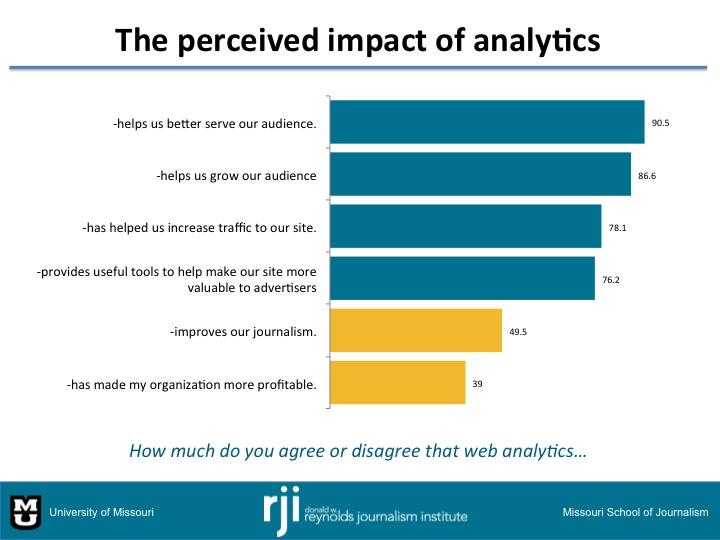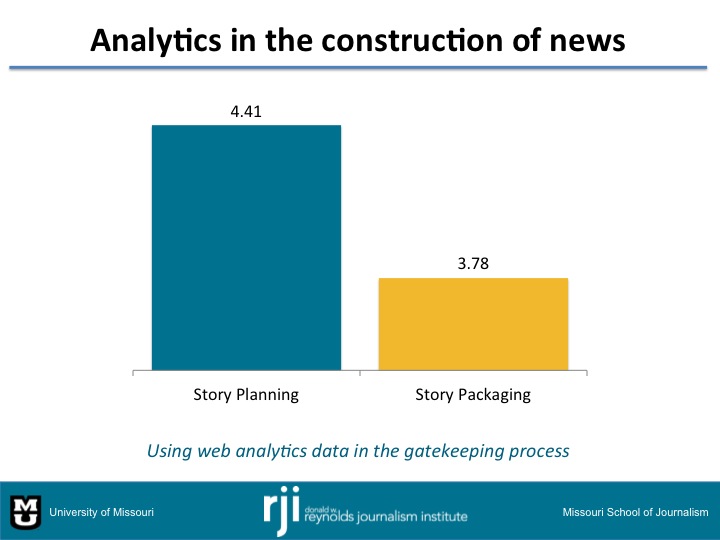Last year, I worked with Prof. Mike Jenner of the Missouri School of Journalism on a survey of American news editors to understand how they use web analytics in the newsroom.
The following slides are from a presentation I gave at the Journalytics Summit of the Reynolds Journalism Institute on September 26, 2013.
We worked with the American Society of News Editors which allowed us to invite its members to participate in the survey.
Most newsrooms in the survey monitor web analytics (96.5%) and majority get the data from a third-party vendor, such as Omniture (55%). Others use free online tools such as Google analytics (41.3%).
Of the news editors we surveyed, majority claimed to have had informal training on web analytics (51.4%) while some claimed to have self-taught knowledge or no training at all (25%).
The most important metrics, in terms of the percentage of respondents who described them as important to extremely important, are number of unique visitors (85%), most read articles (83.6%) and page views (83.2%).
News editors agreed that they use web analytics to decide whether or not to assign additional stories or coverage about an issue (73.1%), decide on story placement (72.2%), decide on how to write the headline (62.9%), and design the website (62.1%). Some 21.4% agreed they use metrics to evaluate the performance of employees!
Early research showed that newsrooms used web metrics to inform story packaging decisions, such as placement of elements in the website. That has changed, with newsrooms now incorporating information from analytics at the earlier stages of gatekeeping, which have editorial implications.
A paper that focused on what accounts for these usage patterns was presented at the International Communication Association conference in London in June 2013.








